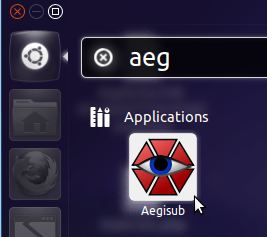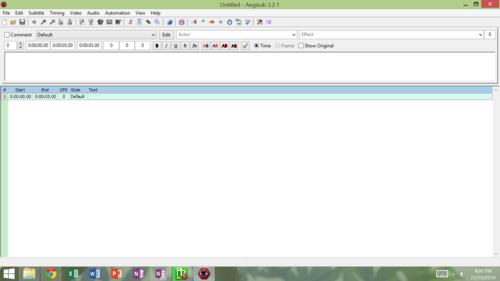

#Aegisub codes code
Now that I have a lot more experience writing these automations, I realize how messy the code is, but it works and is remarkably bug-free.

The first and probably the most useful automation script I wrote.
#Aegisub codes update
From now on, functions that I frequently use will be collected in this library, so that I only need to update one file when somebody finds a bug in one of the functions. I noticed I was reusing a lot of code in multiple automations, and it was getting to be a pain to update the same function in every script whenever somebody found a bug. This module is required for most of my advanced scripts. Update feeds are provided, so all scripts can be installed using the Dependenc圜ontrol Toolbox and will automatically update whenever new versions are released. My scripts require Dependenc圜ontrol ( ) for versioning and dependency management. Also, if you find a bug in any of these scripts, by all means tell me so I can fix it. I take requests (if you can convince me you have a task that would be useful automated). These are primarily typesetting-oriented, but there are a few scripts related to karaoke timing, and I might write editing- or QC-related scripts in the future. This is the page where I’ll be uploading and updating the various automation scripts I write for Aegisub. Mas não é tão difícil de entender os comandos, já que se utiliza mais códigos e tals, qualquer coisa joga no google translate e é gg.Īqui segue as descrições em INGLÊS dos scripts disponíveis no dependecy control, os mais usados, pelo menos.
#Aegisub codes manuals
If you are interested in learning more, visit Agegisub’s website, and read one of the excellent manuals available online.Aqui tem um tutorial fodidamente completinho, mas está em inglês. Of course, its functionality extends well beyond this short introduction. It offers powerful functionality, and while it looks difficult to use at first, it is quite easy to get used to the interface. If you need to adjust, edit, or even create new subtitles for a video file, Aegisub is truly an excellent choice. You can even write your own script if you like.

While the various automation scripts (Automation -> Automation… ) make regular tasks easier. The “Subtitles” menu offers many more tools that make Aegisub a powerful subtitles processor, The “Timing” menu also has several useful tools including “Shift times” that allows you to adjust all lines at once,Īnd “Timing post processor” that allows for finer tuning of the timing with relative ease. If you need to adjust the subtitles to the audio or image (or both), the video and audio boxes are useful, as they allow you to drag the subtitle to the position you want it to appear and still get a live preview of how it appears in the video. Aegisub will automatically move to the next line of the subtitle. Once you are done with the edit, press Enter or click the tick button to commit to the changes. Other than the subtitle text, you can also change the font properties like weight, style, color, etc. To edit a line, find and highlight it in the “subtitle grid” (double clicking it will make the video jump there too), You have some “visual typesetting” buttons to the left of the video box that will allow you to interact with the picture and subtitles. You then have fine control over the subtitles. The most basic use case would be to load a subtitle file (File -> Open Subtitles…) with a matching video file (File -> Open Video…) and open the audio stream straight from the video (Audio -> Open Audio From Video), unless it is available separately (Audio -> Open Audio File…). Nevertheless, the functions these buttons represent are worth having a look at. You will have to hover your mouse and look at the tooltips to understand what each button is for. The buttons are, unfortunately, not very intuitive. There are plenty of (rather small) buttons that allow the user to easily access some of the functions. The other two, the Video and Audio boxes, are only available if you open a video (Video -> Open Video…) or audio file (Audio -> Open Audio File…) or open an audio from the previously opened video file (Audio -> Open Audio From Video). The Subtitle grid and Edit box are only visible at startup. The User Interface consists of four major parts: the Video box (1), the Audio box (2), the Edit box (3) and the Subtitle grid (4). The Aegisub user interface is quite simple, although the number of menu options can look intimidating at first.
#Aegisub codes install
Unpack the file and follow the instructions to compile and install it. Wget http: // /pub /archives /releases /source /aegisub-3.2.2.tar.xz


 0 kommentar(er)
0 kommentar(er)
